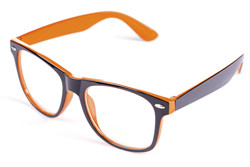High-strength anti-reflective coatings
Anti-reflective coating layers are made from low-refractive index materials, those that allow the most light to penetrate without being reflected. This layer is in direct contact with the environment and its strength affects the ultimate strength of the component. Silicon dioxide is the most commonly used low-index coating material, but its strength is limited. The growing demand for anti-reflective coatings with increased scratch resistance for harsh environments provided the focus of the EU-funded project 'Process and material research for ultra-stable antireflective coatings on glass' (NOSCRATCH)(opens in new window). Research centred on thin-film materials and processes to lead to highly stable anti-reflective coatings on glass or sapphire substrates. The team developed optical materials based on nanocrystalline composites of aluminium, silicon, oxygen and iron to be used for the anti-reflective coating. Scientists optimised a thin-film deposition process and high-power impulse magnetron sputtering to deliver dense coatings with good durability. Researchers then analysed the optical, morphological and mechanical properties of the film. They evaluated film density, composition and microstructure, as well as residual stresses and film hardness. A variety of advanced techniques were employed, including scanning electron microscopy, transmission electron microscopy and X-ray reflectometry. The extensive materials testing and process development conducted within the scope of NOSCRATCH resulted in numerous publications in peer-reviewed scientific journals. Outcomes are expected to aid designers in optimising process parameters to synthesise scratch-resistant anti-reflective coatings for harsh environments such as those to which solar cells are subjected.







